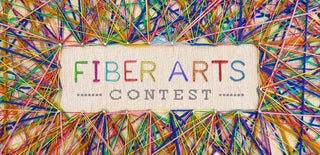Introduction: Easy Pixel Quilt Top
I heard of an easy way to make a pixel quilt top and I've always wanted to try it ever since. As you can see, I finally did and it worked great! So let me show you how to do it.
The traditional way would be to cut the individual squares and sew those into rows. You then sew the rows together to make your quilt top. The hard part for me is to get all those seams to line up. A small deviation in one of your squares or your seam widths and it'll end up skewed. Normally, I don't think that's too big of a deal, but for a pixel art quilt I want the lines to be as clean as possible.
The technique I'm trying now makes the alignment much easier. It uses a big piece of fusible interfacing as a base.
What you’ll need:
- Fusible interfacing that is big enough for your entire quilt plus seam allowance on all the squares
- Cotton fabric in all the required colors
- Cutting mat, ruler and rotary cutter
- Special pen that disappears when wet
- Sheet of oven paper
- Tailors chalk
- Iron
- Sewing machine
- Thread
Step 1: Choose a Pattern
The first step is to choose a pattern. I'm going with this Link sprite that is 16 by 28 pixels. It's best to pick something with a low amount of pixels, like a character from an NES game. I'll need 448 squares, which I'll make 6 by 6 cm (2,5 by 2,5 inch) each. That will give me a quilt top that is 96 by 168 cm (40 by 70 inch).
Step 2: Draw a Grid on Your Interfacing
Start by drawing a grid on the interfacing. The squares are the size of the pixels plus 3 cm (1 inch) of seam allowance, so 9 by 9 cm (3.5 inch) in my case.
I recommend that. you use a special pen that disappears when it gets wet to draw the grid. I didn't, and ran into some problems with stains later on. I managed to fix it, but best to avoid that altogether.
My interfacing isn't wide enough, so I ironed two pieces together. Make sure you cover the adhesive side with oven paper when you do this, otherwise you're going to get glue all over your iron or ironing board.
Step 3: Prepare Your Fabric Strips
Next, cut your fabric into strips that have the same width as the grid. This is a lot of work, but a good rotary cutter and a big cutting mat make it much faster.
Draw squares onto the strips to make it easier to cut them to size and line them up with the grid later on.
Step 4: Iron Everything in Place
Now you can follow my pattern to iron the fabric strips onto the interfacing. Make sure to use that oven paper again, or things will get very sticky very soon.
Line everything up as good as you can, but some small gaps or overlaps are not going to matter, as long as they are within the seam allowance.
I made several mistakes along the way, but that's okay. You can simply reheat the glue and take the fabric off again. Then you can replace it with the right color.
Step 5: Sew Along the Horizontal Gridlines
To assemble the quilt, fold it right sides together along a horizontal grid line and sew along the fold with a 1,5 cm (0,5 inch) seam allowance.
This way, the whole seam gets sewn at once and everything will line up perfectly! This makes the whole process a lot more fun for me, since I'm not constantly worrying about making perfect stitch lines. Also, I don't have to deal with fraying edges.
When the seams in one direction are sewn, press them all towards the same side. The quilt is looking a bit funky at this point, but that will change soon enough.
Step 6: Sew Along the Vertical Gridlines
Now you can stitch all the seams in the other direction.When you're down, press the seam allowances in the same direction again. And there you go! A finished pixel quilt top.
Making a pixel quilt is always going to be a lot of work, but this interfacing technique takes all the stress out of it for me and it makes it quite relaxing.
I'm very happy with how it came out. Some points are a little bit skewed, but most of them are really good. And it's definitely better than what I could have done using the traditional technique.
If you're making a normal quilt, you can now combine your quilt top with layer of batting and a backing fabric and then you can quilt those together. However, I have something a bit different in mind for this one, but that will still be a lot of work. So I'm saving that for another time.

Runner Up in the
Fiber Arts Contest 2017











